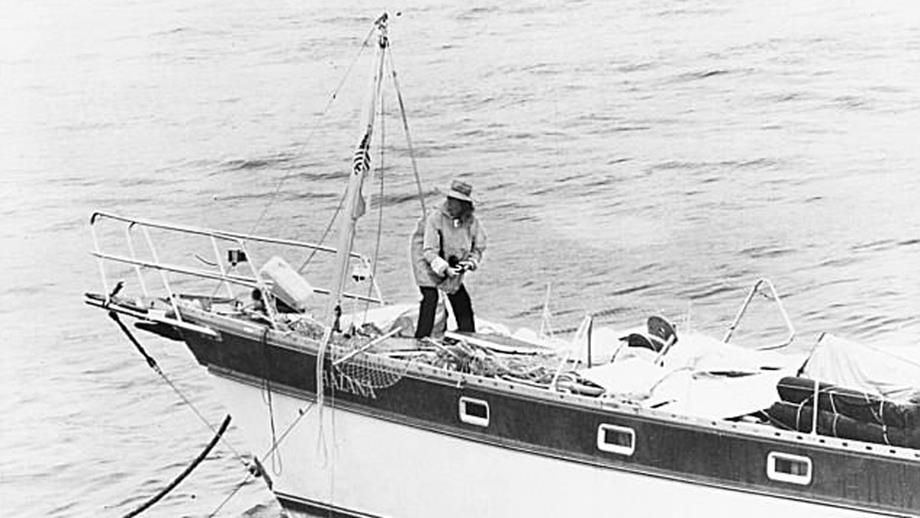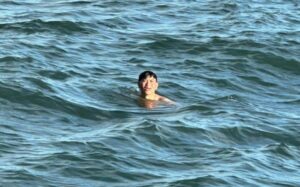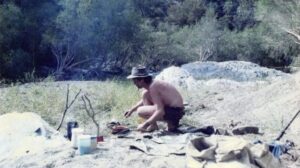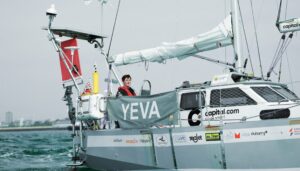In 1983, Tami Oldham Ashcraft was adrift on a battered yacht, thousands of kilometers from land. It is difficult to imagine a more desperately lonely place to be than alone in a dismasted yacht in the middle of the Pacific Ocean. A furious storm had swept her fiancé overboard, leaving her stranded, mourning, and completely alone, without radio or navigation equipment.
Yet somehow, after 41 days, she reached land alive, with a remarkable story of survival, ingenuity, and mental endurance.

Tami after her 41-day ordeal. Photo: Tami Oldham Ashcraft
The storm
They’d been running from the hurricane for three days. Richard Sharpe, 35, and his fiancée, Tami Oldham Ashcraft, 23, were sailing the 13-meter yacht Hazana from Tahiti to San Diego. Both were experienced sailors. Tami was from San Diego and had grown up around boats. She had met Richard on the local docks. From there, they had sailed together to Tahiti.
In Tahiti, they met a couple who hired the newly engaged Oldham and Sharpe to sail their yacht to California. For the first two weeks, the journey was without major incident. Then, just north of the equator, troubling information came through their radio: A hurricane was heading west and growing stronger by the day.
They tried to outrun it, but it came on too fast. By the morning of October 9, the wind was picking up. All they could do was batten down the hatches, clear the deck, take down the sails, and strap themselves in. Then it hit.
Winds reached up to 190kph, well above the minimum hurricane force speed of 118kph. Fifteen-meter-high waves broke over them, and even higher rogue waves came from every direction. Richard was in the cockpit, secured to a safety line and trying to keep the yacht’s stern facing into the waves, which would hopefully prevent it from capsizing.
Richard reassured Tami that they would be alright. Shouting through the storm, he told her to go below and strap herself down. No sooner had she done so than she heard Richard call again.
“Oh my God!” he cried. The yacht plummeted beneath her as they were caught in the dip below a massive rogue wave.
Then Tami lost consciousness.
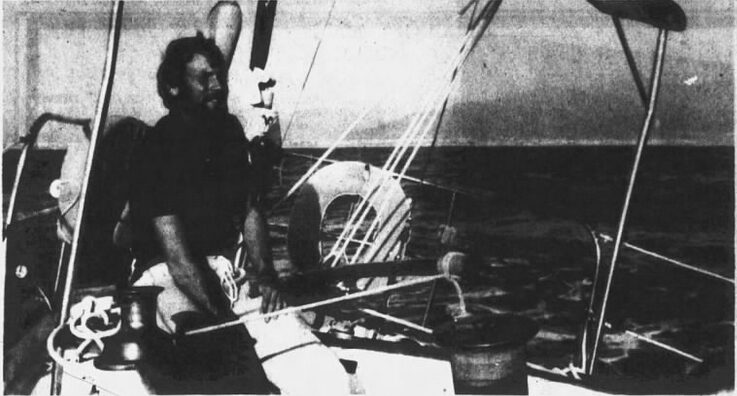
Richard Sharp sailing off the coast of Mexico before his disappearance. Photo: Hawaii Tribune-Herald Archive
Waking up alone
When the wave hit, Hazana had pitchpoled, capsizing end over end and knocking out Tami. Three hours later, she returned to consciousness, bruised and feverish, covered in her own blood. From the motion of the boat, she knew the storm had abated. She crawled out onto the deck.
In a Los Angeles Times interview, Tami described this as the worst moment of her ordeal: when she saw Richard had disappeared.
His tether was still firmly attached, but the force of the hurricane had pried apart the D-ring on his safety harness, and Richard had been washed away. The storm had also torn the Hazana to shreds: the deck had split, and both masts and the sails were gone. The radio, engine, and navigational systems were irreparable.
Wracked with shock and grief, with a major head injury and significant blood loss, Tami was in no state to consider the practicalities of survival. She screamed, sobbed, and, thinking the yacht was about to sink, curled up into a fetal position inside their little yellow lifeboat. But when she woke up the next morning and found that the yacht was still floating, she forced herself up.
“Richard died so I could live,” Tami told the LA Times later. So she had to do everything possible to survive.

The owners of the ‘Hazana’ assess the damage to their yacht. Photo: Hawaii Tribune-Herald Archive
Jury-rigged and sailing by the stars
Water had flooded the cabin, destroying the electronics and dragging the Hazana slowly downward. Tami immediately began pumping out the water. She discovered that the hull, at least, was not leaking. The only remaining sail was a storm jib, a small triangular sail intended only to help steer during extreme weather conditions. She raised the sail on a makeshift mast, made out of half a broken pole.
Equipped with a sail, she could now steer the ship — but to where? She was 2,400 kilometers away from the nearest land, the Hawaiian island of Hilo, and without modern navigation equipment.
What she did have was a sextant. The marine sextant is a celestial navigation tool in use since the 18th century. Mariners use it to fix their latitude by measuring the angles between the horizon and the sun, moon, and stars. It can also determine longitude, although that is much more difficult. At first, her plan was to travel by latitude alone, hoping to guess the right place to turn.
But after a week, she pumped the last of the water out of the bilge and found her watch still functioning. The veteran sailor was then able to calculate longitude by measuring the difference between local time and the time on her watch, which showed the time at the known longitude of Greenwich.
Once she found her position, she was able to get onto the North Equatorial Current and hitch a ride. This current took her down the 19th parallel at up to six knots, much faster than the two to three knots the damaged Hazana could make on it’s own.
Even the work of navigation, sailing, and pumping water left her with time to think. Her grief was still overwhelming, and she was surviving on rationed canned goods. At the same time as she battled the elements, she had to battle her mind.
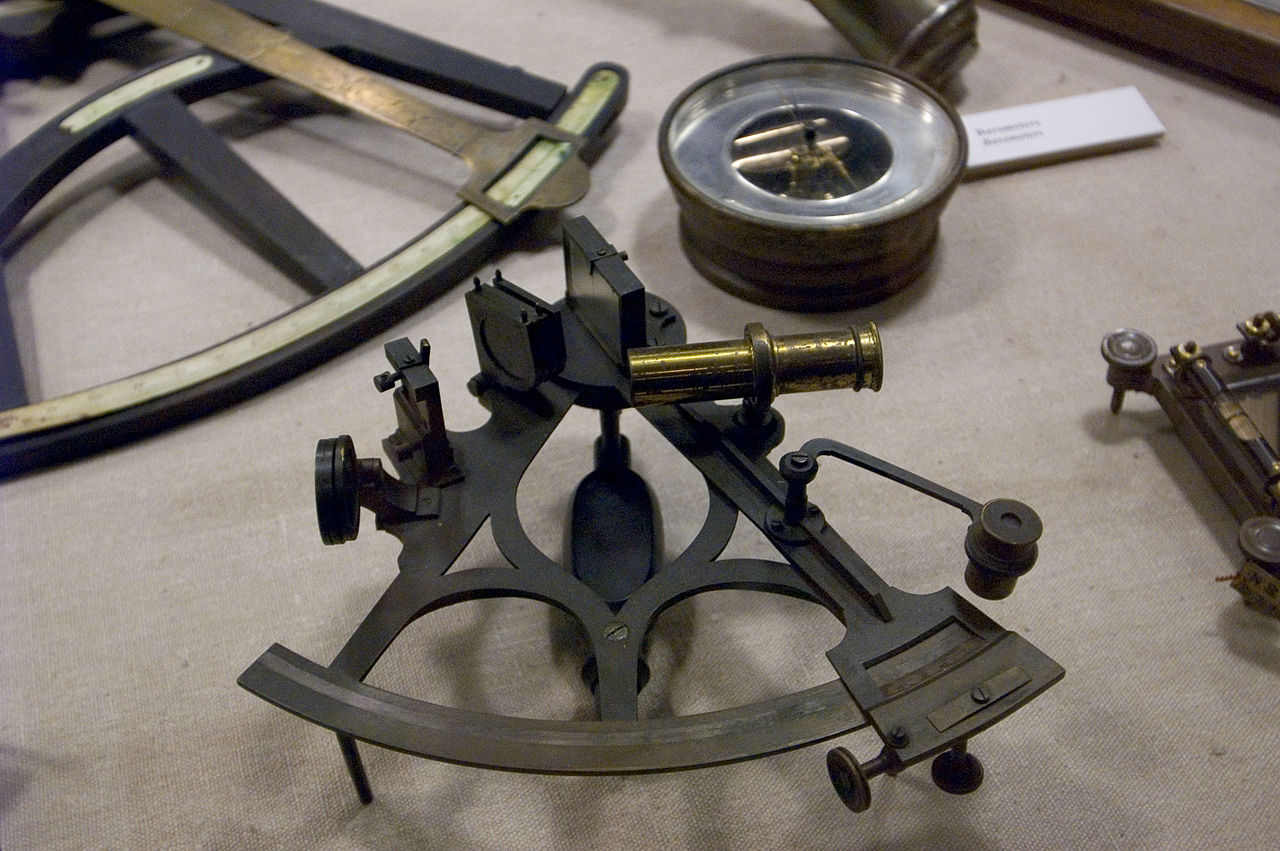
A sextant, compass, and other navigational tools in Sjøfart Museum in Oslo, Norway. Photo: Wikimedia Commons
Third man factor
During traumatic hardship, some people will find themselves supported and comforted by an unseen voice or presence. Called the Third Man Factor, psychologists believe is is a subconscious defense mechanism that helps survivors keep going under terrible conditions.
Ernest Shackleton famously reported the phenomenon when he and his two companions, Tom Crean and Frank Worsley, were crossing South Georgia Island in a desperate bid to reach rescue. In his book, South, he wrote that “it seemed to me often that we were four, not three,” and that Crean and Worsley had independently felt the same thing.
Shackleton’s experience inspired a section of T.S. Eliot’s The Wasteland, perhaps the most celebrated poem of the 20th century. This quotation, asking, “Who is the third who walks always beside you?”, gives the phenomenon its name.
Tami’s “third man” was Richard. “I really felt him right there with me the whole time, the air was thick with his presence,” Tami told the Royal National Lifeboat Institution.
She spoke to Richard frequently during her 41 days, sitting by his tether, which she kept attached to keep him with her. The presence of Richard spoke back, encouraging her to keep going.
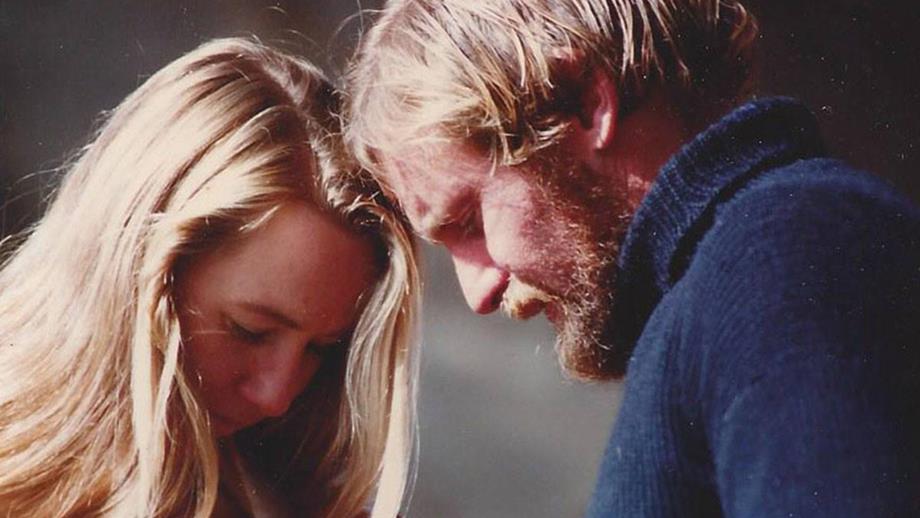
Tami and her fiancee Richard. Photo: Tami Oldham Ashcraft
Gone to Hilo
Tami’s route was a straight line down the 19th parallel of latitude, then an all-important turn. If her longitude calculations were off and she missed Hawaii, she’d be lost in the vastness of the Pacific. Missing this turn was a constant source of anxiety for her.
Every day, she wrote in the ship’s log. It was a way to try and stay sane, but it was also a record of her experience, in case she didn’t survive. “I didn’t want my family to never know what happened to me.” she later explained.
After 39 days, she spotted what she thought was the island of Hilo, far off on the horizon. Peering desperately, Tami couldn’t tell for sure whether it was the island or only clouds. Before she could see it clearly, the cloud cover thickened, hiding the island entirely.
Around the same time, a small military plane, flying low, passed over her without seeing her. Tami had set off flares, but neither the plane nor the two distant ships responded. Not for the first time, she contemplated suicide — but the voice of Richard returned. She was so close, it told her, she had to go back out on deck and keep looking.
So she returned to the deck and saw that the clouds had cleared. The island of Hilo rose on the horizon. To celebrate, she cracked open the last bottle of beer on board. Two days later, just after midnight, Tami and the Hazana were three kilometers from the harbor.
But it was too risky to navigate the harbor at night in a decrepit little yacht. So close and yet so far, she sailed back and forth off the coast of the island.

The view into Hilo from the sea. Photo: Shutterstock
After 41 days at sea
The Hokusei Maru was a Japanese scientific vessel conducting research on squids. In the red-golden light of dawn, their research was interrupted by a nearby emergency flare. It came from a battered yacht, crewed by a single young woman.
The researchers of the Hokusei Maru hooked the Hazana up to their own vessel and towed her safely to the harbor breakwater. There, Coast Guard officials were waiting to pick Tami up and finally take her to shore.
Tami’s mother Zonna helps Tami comb out her hair, which had become matted during her ordeal. Photo: Hawaii Tribune-Herald Archive
As soon as they learned she was safely ashore, her mother, Zonna Roberts, rushed from San Diego to Hilo. “Now that I have survived,” Tami told the Hawaii Tribune-Herald, “I’m getting back to people again.”
Tami Ashcraft was glad to have survived, but with the immediate emergency over, there was less to distract her from the pain of losing Richard.
“Even when I got back to shore, I was looking for him in crowds,” she admitted. She suffered nightmares of being lost at sea and of losing Richard.
The head injury she sustained made it difficult to read. It took years for her to recover and begin writing down her story. It was published as Red Sky in Mourning in 2002, and later adapted into a movie.
Tami didn’t let her experience keep her from the sea. She returned to sailing, always wearing a special pendant around her neck. The pendant is in the shape of a sextant, the tool that guided her out of a seemingly impossible situation.
